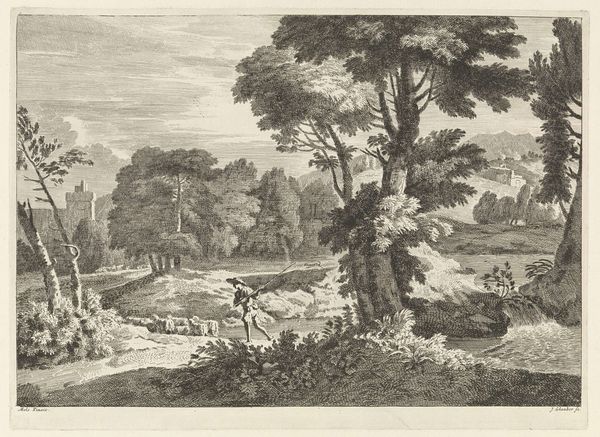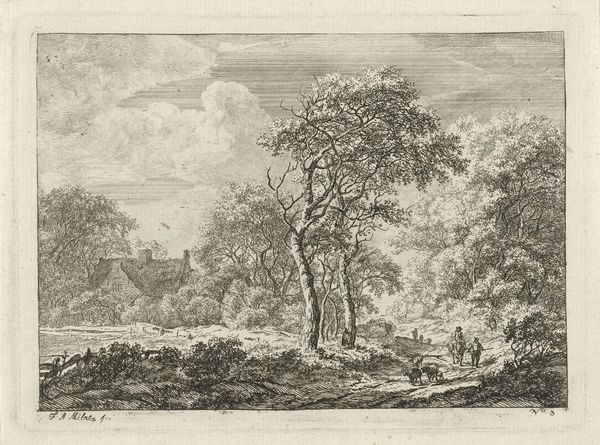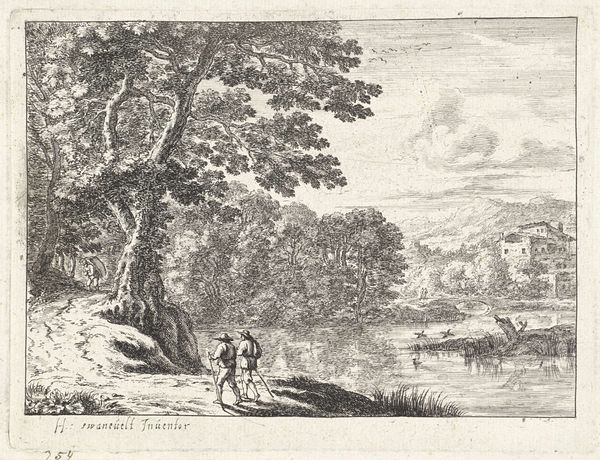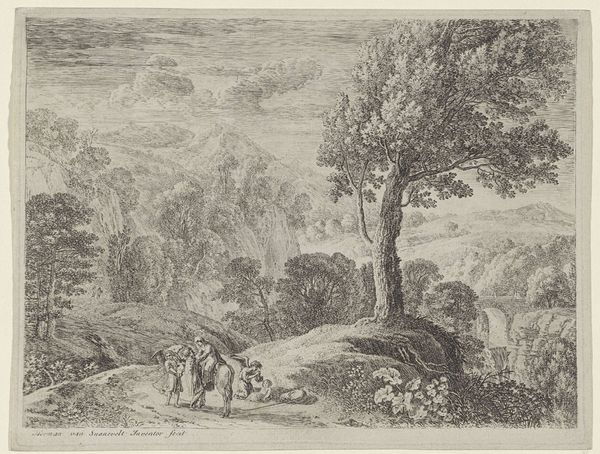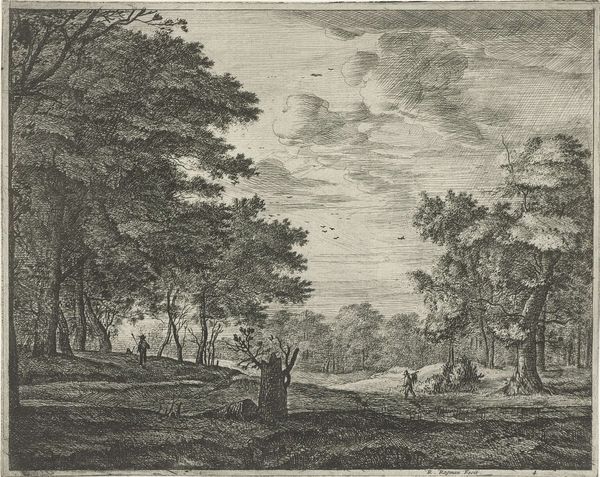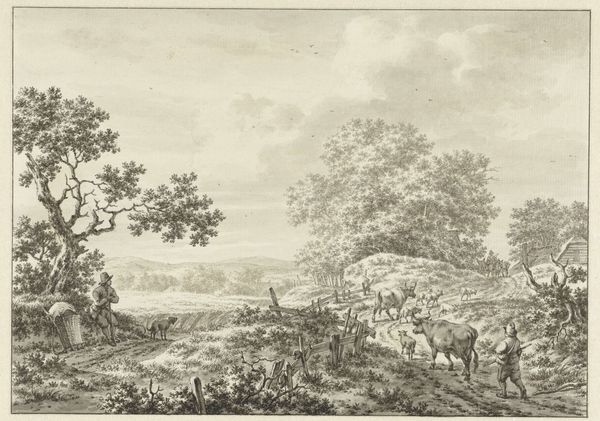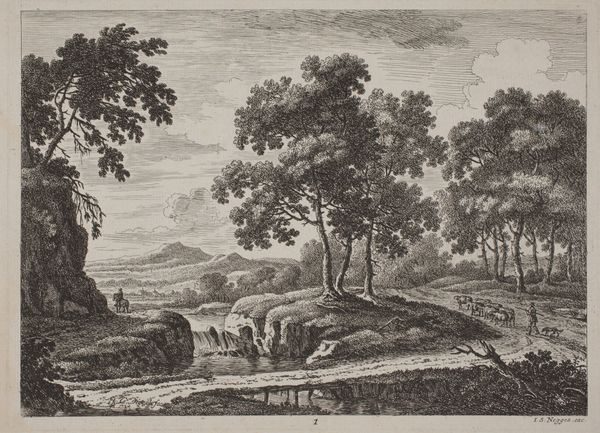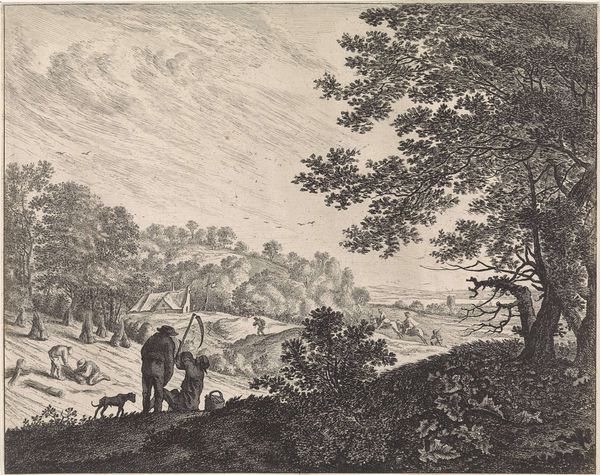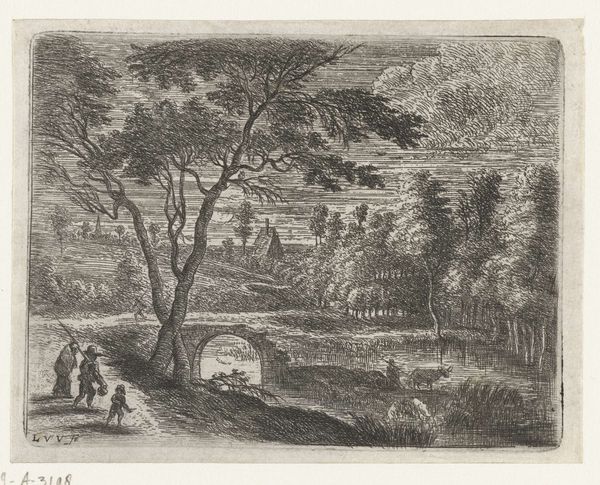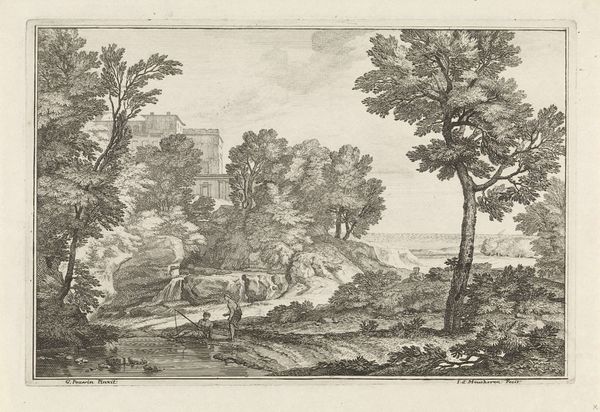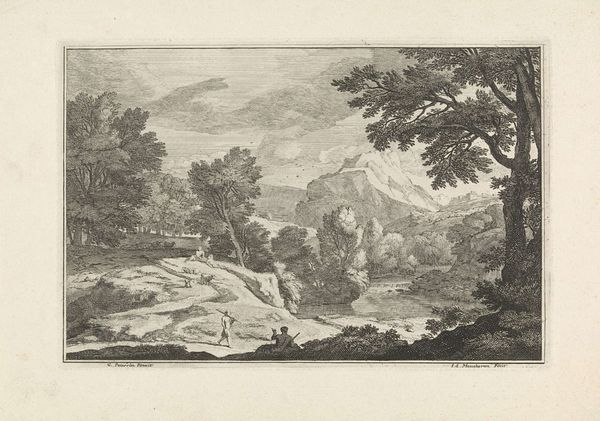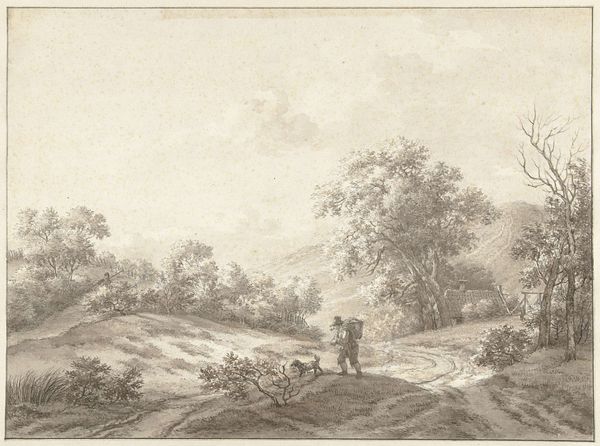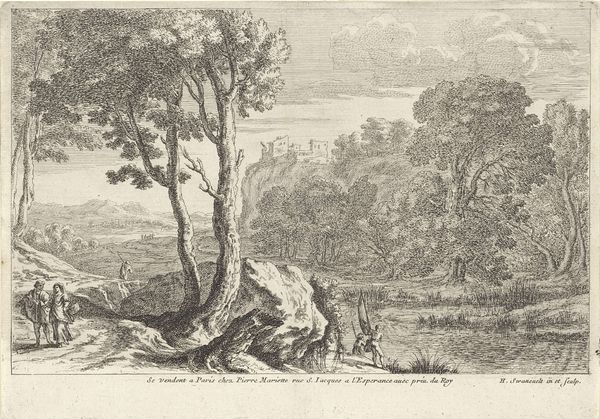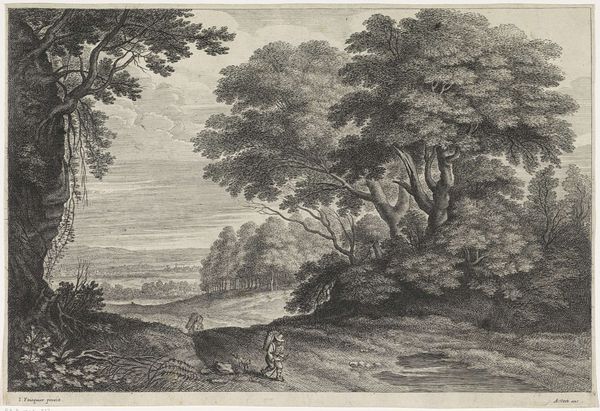
Landschap met Christus en de discipelen op weg naar Emmaus 1586 - 1650
0:00
0:00
cornelisgallei
Rijksmuseum
print, etching
#
baroque
# print
#
etching
#
old engraving style
#
landscape
#
etching
#
history-painting
Dimensions: height 125 mm, width 183 mm
Copyright: Rijks Museum: Open Domain
Editor: So, here we have "Landscape with Christ and the Disciples on the Road to Emmaus," an etching by Cornelis Galle I, dating somewhere between 1586 and 1650. It has such a detailed, almost dreamlike quality, but the religious figures seem somewhat subdued in the larger scene. How do you interpret this work? Curator: I see this piece as an entry point to understanding the intersection of religious narratives and the burgeoning landscape genre during a period of significant social upheaval. The placement of Christ and his disciples feels deliberate. Galle isn't just illustrating a biblical story; he's setting it within a very specific vision of the world. How does the landscape itself strike you? Editor: It feels both idealized and somewhat threatening, almost sublime. The towering mountains, the dense forest… the figures seem quite small against that backdrop. Curator: Exactly. Consider the context: The 16th and 17th centuries were marked by religious wars and shifting power dynamics. Galle, through the deliberate choice of making figures minute against such vast setting, could be inviting us to contemplate the place of faith and individual action in a tumultuous world. Do you see how the composition almost diminishes human agency? Editor: I do. So, it's less about the triumph of faith and more about its struggle within the grand scheme of nature and history? Curator: Precisely. And think about who had access to prints like these. They weren’t just religious icons, they were commodities, spreading certain ideologies to a broader audience. The landscape isn't just scenery, it's a carefully constructed stage for these ideas to play out. Editor: That's fascinating, framing it as part of a larger cultural and political conversation. I had focused too much on just the biblical story. Curator: We often overlook how landscapes were actively shaping worldviews! There is something for us to always reflect about in what is revealed or concealed.
Comments
No comments
Be the first to comment and join the conversation on the ultimate creative platform.
